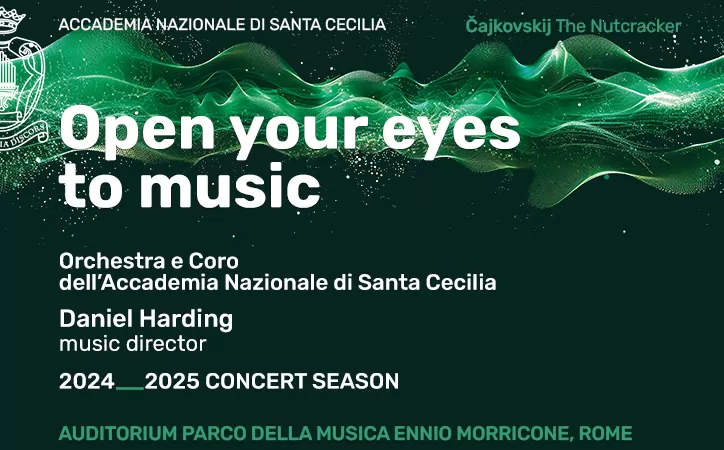The Japanese Cultural Institute in Rome celebrates 50 years in the capital
To celebrate the 50th anniversary of its foundation, the Japanese Cultural Institute in Rome is presenting an extensive programme of events designed to increase appreciation of Japanese culture in Italy.
A series of exhibitions, theatrical shows, conferences and film festivals is bookended by two major opening and closing events – one in the visual and one in the dramatic arts – defining the breadth of the institute’s cultural activities. The milestone provides the institute with the perfect opportunity to reflect on its achievements over the past 50 years as well as the chance to look forward to the possibilities of the future. Its anniversary events explore Japanese culture in the context of two key themes: tradition and innovation.
Central to the celebrations is the exhibition Art in Japan: 1868-1945, which opened in late February at the nearby National Gallery of Modern Art (GNAM), where it runs until 5 May. The retrospective comprises more than 170 works created between the Meiji era (1868-1912) and the end of world war two, and features a combination of Japanese decorative arts and modern nihonga art. Meaning literally "Japanese-style paintings", the nihonga works are made using traditional materials and painted in accordance with ancient Japanese artistic techniques, to distinguish such works from modern western art. The Rome exhibition reveals how Japanese artists responded by leading a renewal of a proud artistic past, fusing tradition with innovation. This cultural resurgence coincided with a period of great modernisation in Japan.
The anniversary’s closing event is a theatrical performance scheduled for a Roman theatre in October. The New York-based photographer Hiroshi Sugimoto reworks Sonezaki Shinju, one of the most important works by Japanese dramatist Chikamatsu Monzaemon (1653-1725). The traditional bunraku puppet-theatre production centres around the notion that by consummating their passion through double suicide (shinju), two lovers’ souls might be united in paradise. Further details of this event were unavailable at the time of going to press.
Recently the institute held a much smaller exhibition entitled Il Giappone Artigiano, which presented 92 hand-crafted objects from across Japan. The exhibition revealed how independent artists and artisans continued to nurture traditional craftsmanship in the face of rising mass production of goods during the country’s Meiji era.
In February the institute also staged a festival entitled 50 years of Japanese Cinema, a cycle of films featuring works by Japanese cult film directors from Masahiro Shinoda in the 1960s to more recent works by Shinobu Yaguchi.
On 26 March the institute launches an exhibition of contemporary ceramics in Rome made by Japanese artists who were recipients of Italy’s historic Faenza award, deemed the most important recognition of ceramic art in the world. The exhibition will comprise some 40 pieces from the 1960s to today, providing an insight into the international image of contemporary Japanese ceramics, and will be opened with a lecture by Claudia Casali, director of the International Museum of Ceramics in Faenza in the Emilia-Romagna region of northern Italy.
The institute sits amid exotic gardens on Via Antonio Gramsci, above the British School and opposite Villa Borghese in the heart of the city’s foreign academy belt in Valle Giulia. Designed by noted Tokyo architect Isoya Yoshida, the building is a superb example of the architecture associated with Japan’s Heian period (794-1185). The long eaves, tapering elegantly from the series of flat rooftops, jut out over brown and white pillars and grated shitomi walls in an organic and tasteful design, in contrast to some of its more grandiose neighbours. With its tall lanterns suspended from the ceilings, its wooden surfaces and generous feeling of space, it gives visitors on entering the building the sensation of stepping into Japan.
The institute's gardens are the work of the renowned garden designer Ken Nakajima, who was also responsible for the Japanese section of the botanic gardens in Trastevere. With their cherry trees, wisteria, irises and dwarf pines they feature all the essential elements associated with the Sen-en style, including a waterfall, ponds, an ornamental bridge and a traditional tōrō stone lamp. This year the gardens are open to the public on Friday afternoons and Saturday mornings from 22 March to 25 May.
Following an agreement between Japan and Italy in 1954, the Japanese Cultural Institute was inaugurated in December 1962 – the first of its kind to be built overseas. In 1972 Japan’s ministry of foreign affairs established the Japan Foundation to replace the Kokusai bunka shinkōkai, a private society that had promoted international cultural relations.
This year also marks the 400th anniversary of the first Japanese diplomatic mission in Italy and Spain, the Hasekura Mission of 1613. Hasekura Rokuemon Tsunenaga (1571–1622) was a samurai who headed an historic diplomatic mission to the Vatican, as well as Spain and Mexico, between the years of 1613 and 1620. However, unfortunately for Hasekura, European monarchs spurned his offers of trade in opposition to Japan's then suppression of Christianity. Despite ultimately failing, Hasekura is generally considered the first Japanese ambassador in Europe and America. The next Japanese diplomatic mission to Europe would not occur until 1862. Today Japan’s embassy to Italy can be found on Via Quintino Sella near Porta Pia.
Nearly 400 years after the arrival of Hasekura another Japanese man left his mark on Rome. In 2011 entrepreneur Yuzo Yagi – who has imported Italian clothes to his Yagi Tsusho chain of fashion stores in Japan for some 40 years – provided the €1 million funding necessary to restore the city’s Egyptian-style pyramid, Piramide Cestia, in the S. Paolo-Ostiense district.
The links between Rome and Tokyo are stronger than ever.
Andy Devane
Istituto Giapponese di Cultura, Via Antonio Gramsci 74, tel. 063224754. www.jfroma.it. Mon-Fri 09.00-12.30/13.30-18.30. Wed until 17.30.
Published in the paper edition of Wanted in Rome, 6 March 2013


















